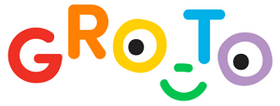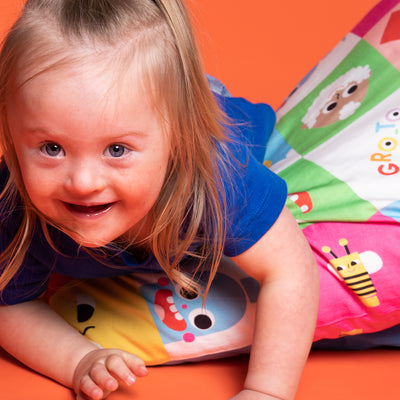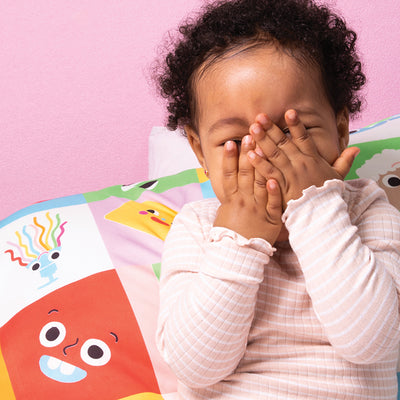
Your mission at bathtime: Get the kids clean. Their mission at bathtime: Get as much water as possible on every wall/tile/dry grown-up present.
But! While they’re having their bubble-filled splash-fest (and making a pool out of your bathroom), consider turning their time in the tub into a learning opportunity – with easy, fun activities that can help your child’s development.
The toy wash.
Bring a toy doll or animal into the bath, as well as some extra bubbles and a small cloth, and encourage your kids to give them a wash. They’ll be using imaginative play to practice the skills of cleaning, scrubbing, rinsing and drying, while also learning how to look after other objects (important for their social and emotional development). And, as with any task that holds their attention for more than 0.2 seconds, while they are busy washing, it’s working to enhance their concentration and focus. Added bonus: Everyone ends up with clean toys!
Playing with cups.
You don’t need specific bath cups – although if you’ve got them, great! – but stacking cups, measuring cups or even plastic drinking cups all work just as well. Chuck them in the water and let your little rascal experiment with filling, lifting, pouring, splashing (yes, sorry!) and pouring. Movements like this enhance a kid’s hand-eye coordination, as well as their gross and fine motor skills. Encouraging your child to squeeze toys to squirt water into the cups can also boost muscle strength in tiny hands.
Exploring senses.
Bathtime engages a lot of senses – touch, sight, hearing, smell, taste. (Uh, those bubbles are not for eating…) But you can give your kid a chance to explore new sensations by introducing different materials (ice, bubbles, slime), textures (gritty, squishy, slippery) and temperatures (warm, cool, cold). As they begin to play, talk to your child about what they’re experiencing: “How do the bubbles feel on your skin? Soft or slippery?” “Is the water warm or cold?” “I think you have drunk enough bath water now!” This chatter will also help to improve their communication skills.
Counting and numbers.
Maths might not sound like the funnest addition to bathtime, but counting and introducing scientific concepts (such as volume and weight) while in the water can be really helpful for little-big kids. Challenge them to measure how many cups of water will fill up a bucket, or guess whether certain items will sink or float. You can also encourage children to engage with their bodies, counting their fingers, toes, arms and legs – this not only supports their knowledge of numbers and counting, but also helps in their physical development. They’ll soon learn they have five toes! Two arms! Two legs! All the better to splash you with.





Comments